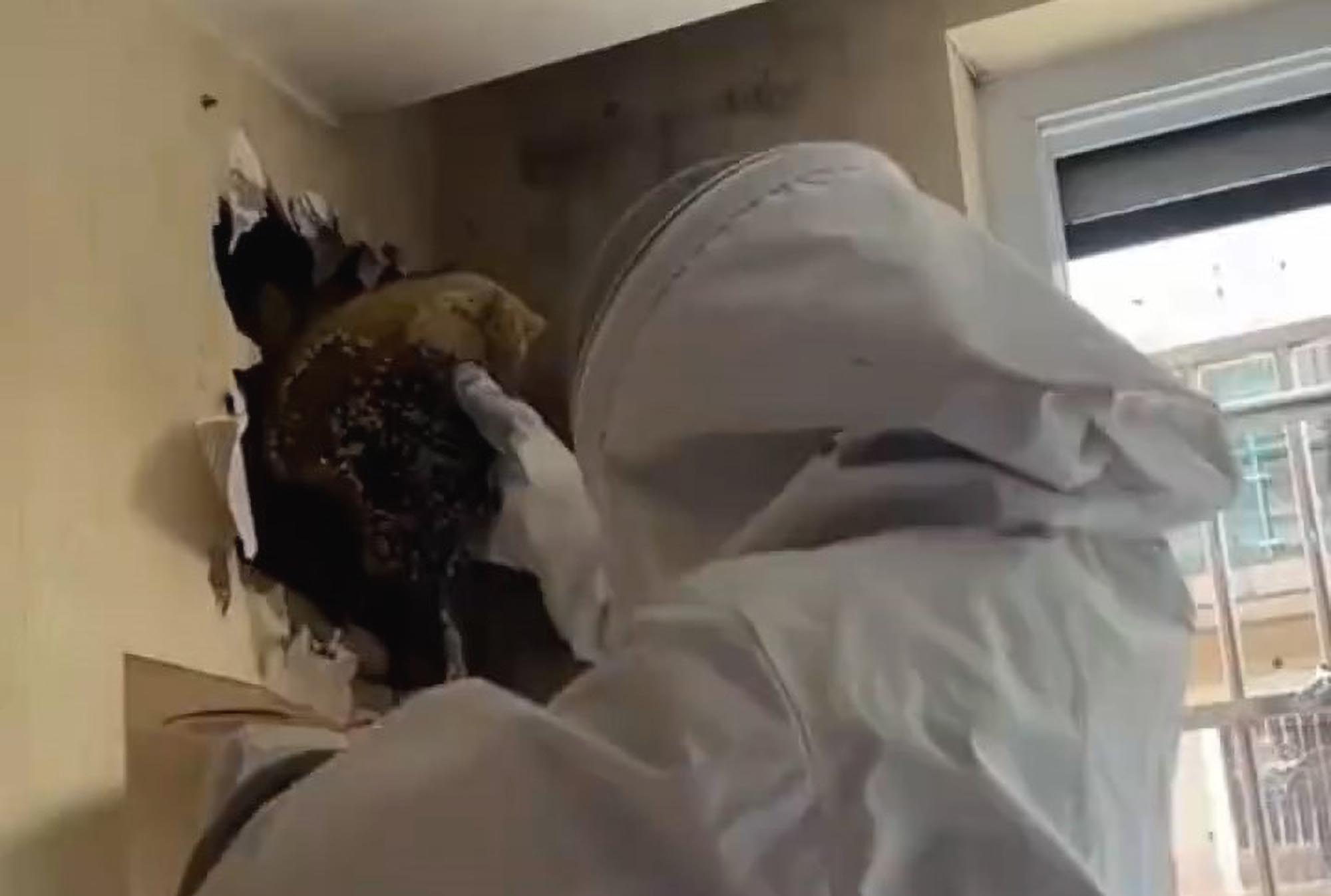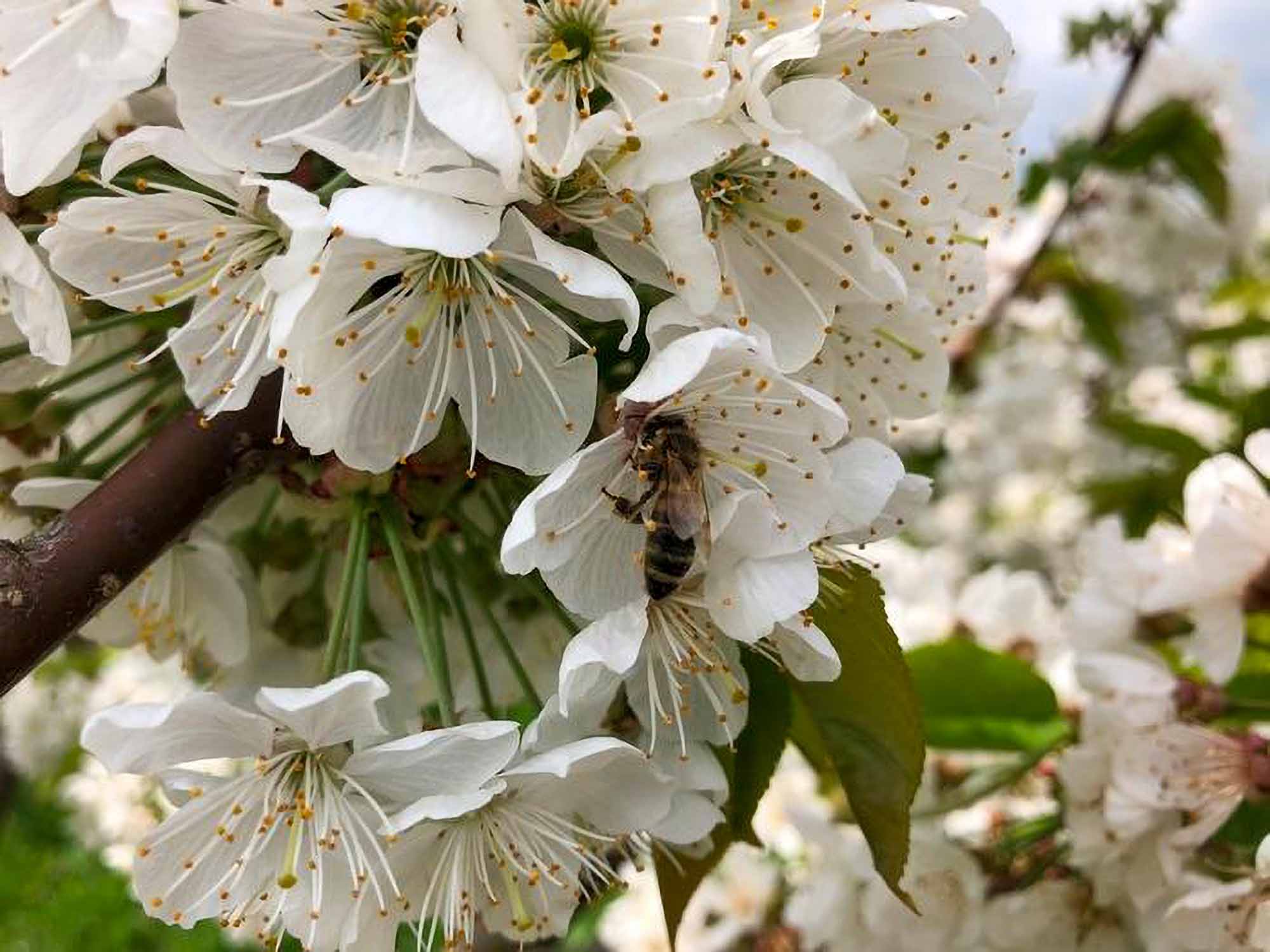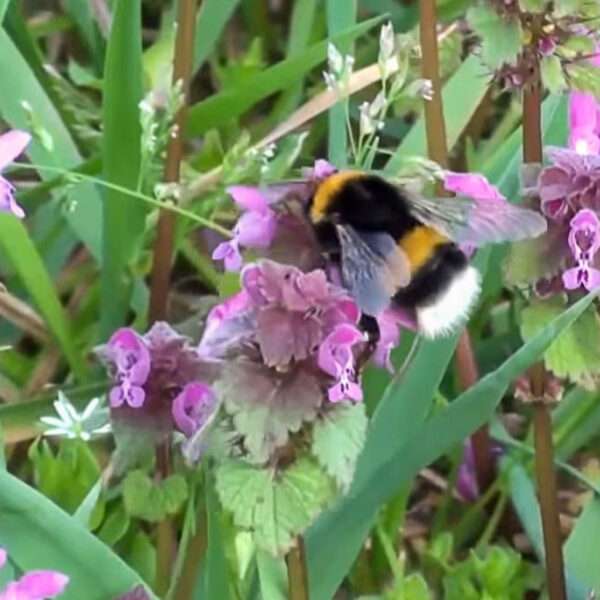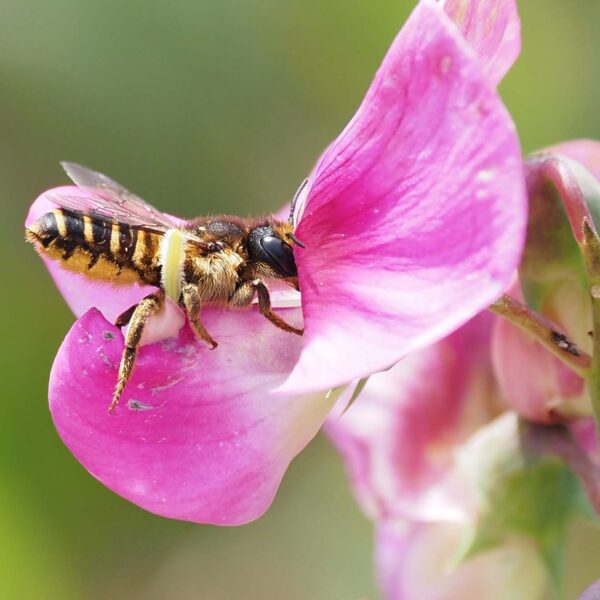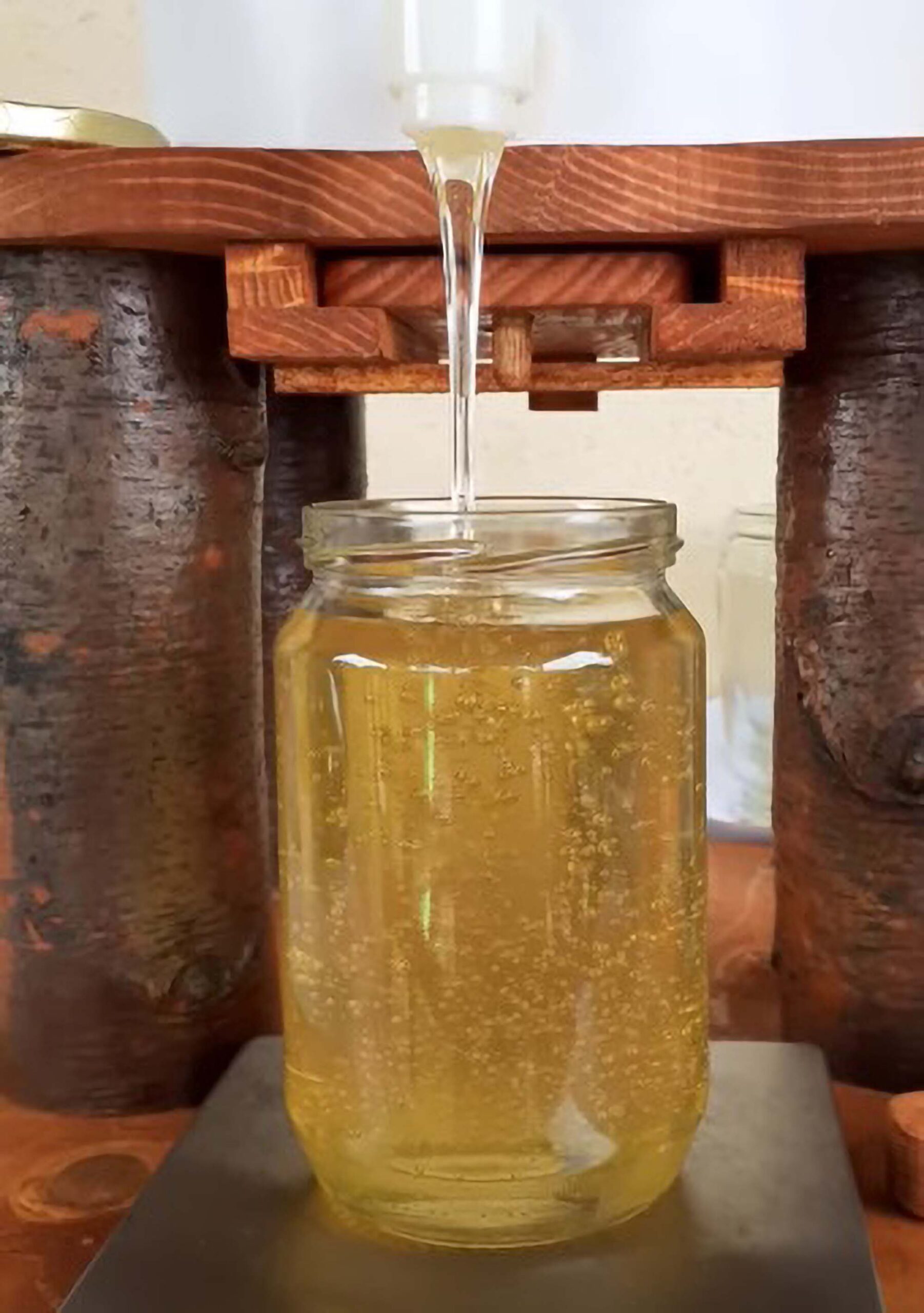Firefighters removed honeycombs and a large amount of honey from inside a wall in an apartment in a city in eastern China.
Officials in Taizhou, Zhejiang Province, said residents called the local fire brigade after discovering the hive.
Firemen put on protective suits before prying open a wall panel. One of the firefighters then pulled out the combs and put them into a plastic bag. He eventually disinfected the spot using fire.
Overall, the combs contained 10 kilogrammes (22 lbs) of honey, according to Chinese news websites and reports on social media.
Netizens were astonished by the discovery.
One user said: “By the way, I’m greedy for all the honey.”
Speaking from the perspective of the insects, one commentator quipped: “I’ll call the police, someone robbed us.”
Another one joked: “The bees are like: ‘Someone is stealing my food rations!'”
But many social media users also thanked the bees for their “hard work.”
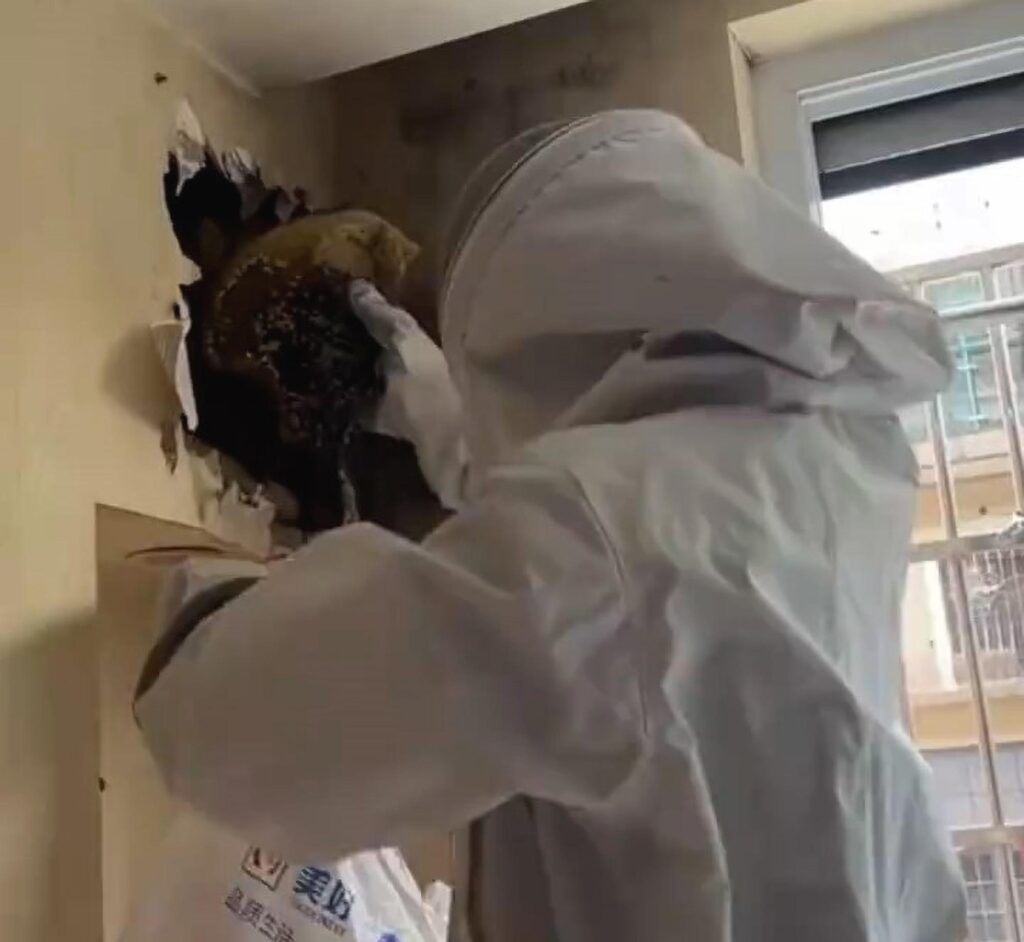
Experts from the University of California suggest that, instead of killing the bees in a house wall cavity by applying insecticides, the swarm should be removed with the support of a beekeeper.
In their Integrated Pest Management (IPM) fact sheet, they explain that the apiarist has to locate the nest by tapping the wall and listening for the hum of the colony.
They reveal that some removal experts use stethoscopes to find the combs or nests while others drill small holes into the wall.
The California University experts add: “If the bees are to be saved, the beekeeper gently removes them and their combs. If the bees aren’t going to be saved, they can be removed from the void with a vacuum device.”
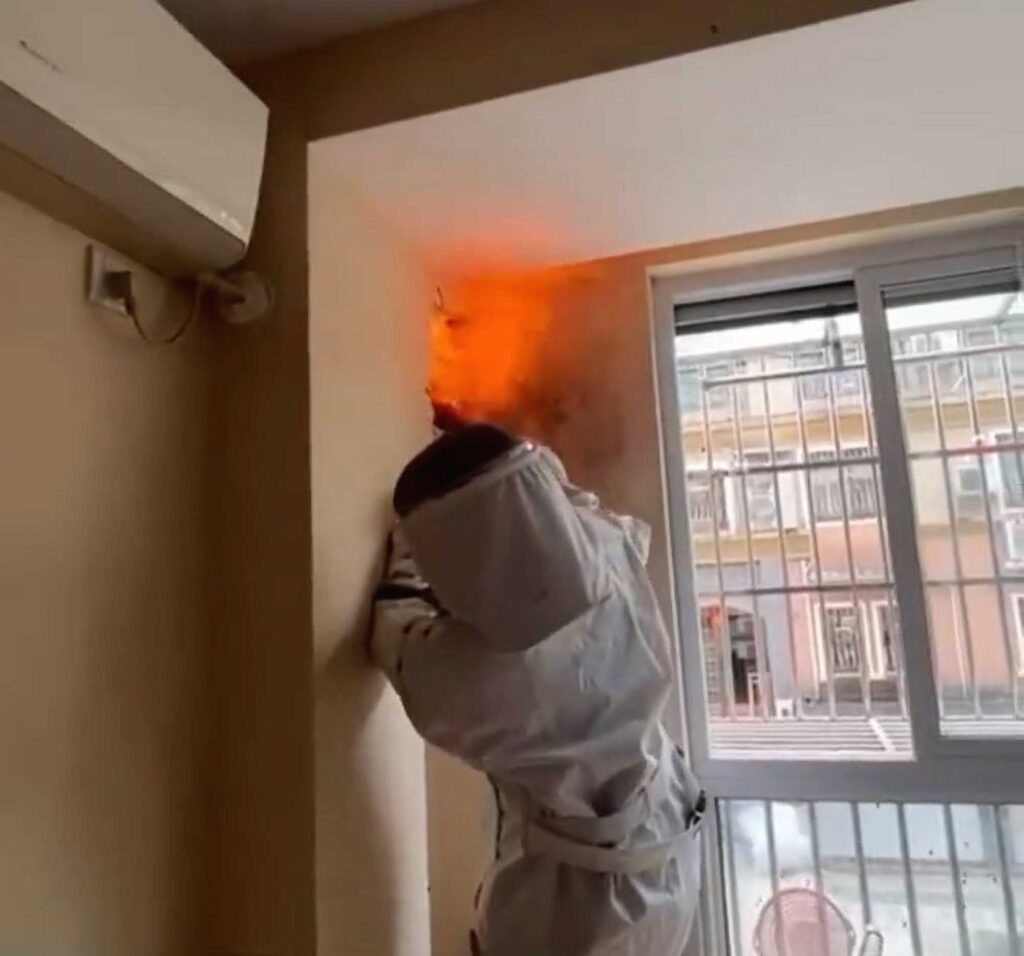
However, they warn regarding the latter option: “This process tends to stimulate the bees to release an alarm pheromone that smells like bananas and increases defensive behaviour, so everyone nearby must be fully clothed in a bee suit.”

